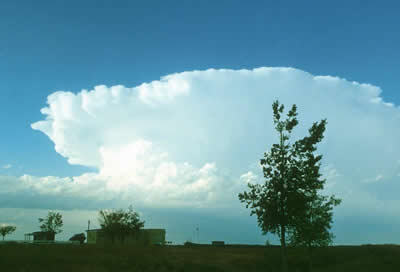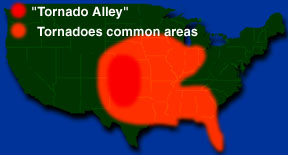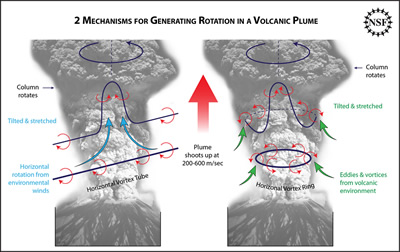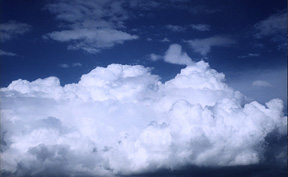Picture of a May 11, 1991, tornado in Cimarron County, Oklahoma
Click on image for full size
Greg Stumpf
Tornadoes
Tornadoes form from severe thunderstorms. They are very destructive because they have a high energy density. They also don't last very long. This makes it hard to learn about them. Since scientists don't know much about tornadoes, it's also hard to forecast them. And because little is known about tornadoes, there are many myths about them which aren't true. Tornadoes can form anywhere in the world. About 75% of the them happen in the United States. Most of these form in the central U. S. in a place called tornado alley. There are also some other interesting facts about tornadoes. People who are interested in tornadoes sometimes become trained tornado spotters for their community. Others chase tornadoes, either to research these incredible storms, or to photograph them. After a tornado passes by, scientists try and figure out how strong it was by using the Enhanced Fujita Tornado Scale.
You might also be interested in:

A tornado begins in a severe thunderstorm called a supercell. Scientists aren't exactly sure why, but air coming into the storm begins to swirl and forms a funnel. The air inside the funnel spins so fast
...more
Thunderstorms are one of the most exciting and dangerous types of weather. Over 40,000 thunderstorms happen around the world each day. Thunderstorms form when very warm, moist air rises into cold air.
...more
A section of the Great Plains in the central part of the United States is called "Tornado Alley". This is because more tornadoes form here than any other part of the country. The plains are flat which
...more
Scientists have observed that in some volcanic eruptions, a rotating, column of dust and gas forms and causes the volcanic plume to rotate on its axis. This rotation causes the formation of lightning and
...more
A supercell thunderstorm is a huge rotating thunderstorm. It can last for several hours. These storms are likely to form long lasting tornadoes and large hail. There are two types of supercell thunderstorms.
...more
Cumulonimbus clouds belong to the Clouds with Vertical Growth group. They are also known as thunderstorm clouds. A cumulonimbus cloud can grow up to 10km high. At this height, high winds make the top
...more
There are two main types of thunderstorms: ordinary and severe. Ordinary thunderstorms are the common summer storm. Ordinary thunderstorms last about one hour. Rain and small hail occur. Severe thunderstorms
...more














